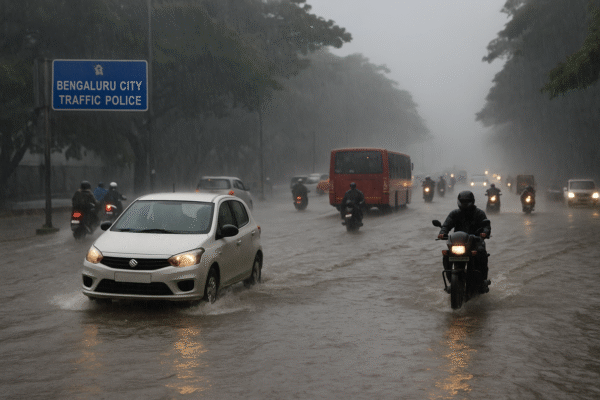If you’re planning a trip across the United Kingdom, particularly to Scotland or Northern England, recent travel disruptions following Storm Floris may impact your journey. While the storm has moved on, the aftermath has continued to affect rail lines, airports, ferry routes, and local infrastructure across key destinations like Edinburgh, Glasgow, Newcastle, Manchester, Belfast, and several popular Scottish islands.
Rail Services: Expect Delays and Limited Operations
ScotRail continues to restore its operations following severe weather damage, especially in northern and coastal areas. Crucial tourist routes such as Edinburgh to Inverness, Inverness to Wick, and Edinburgh to Glasgow Queen Street are operating on limited schedules as safety inspections are still underway. According to Transport Scotland, around 20% of trains remain delayed or cancelled, especially on routes to the Scottish Highlands.
In Northern England, LNER services between Newcastle and Edinburgh, and TransPennine Express connections toward Manchester and York, remain disrupted. With more than 15% of northern routes affected, tourists should check the National Rail Enquiries and ScotRail alerts before boarding.
Air Travel: Persistent Delays Across Major Airports
Although most UK flights resumed after the peak of Storm Floris, airports in Edinburgh, Glasgow, Newcastle, Manchester, and Belfast continue to face lingering delays and cancellations. Edinburgh Airport reported a 15% increase in flight cancellations, while Belfast City Airport is still experiencing the ripple effects of a two-day grounding.
The UK Civil Aviation Authority advises all travelers to verify flight status with their airlines at least 24 hours before departure. Factors such as high winds and limited visibility, especially in regional airports, are causing operational issues for carriers.
Ferry Services: Island Connections Severely Affected
Island-hopping tourists heading to destinations such as the Isle of Skye, Mull, Islay, Lewis and Harris, and the Isle of Arran should brace for delays and cancellations. Caledonian MacBrayne (CalMac) ferry services are still grappling with weather-induced backlogs and storm surges. While the Isle of Man services between Douglas and Liverpool have resumed, Scottish ferry routes remain unstable, especially to the Hebrides.
Travelers are strongly urged to monitor CalMac’s service status page for real-time updates before finalising any inter-island travel plans.
Power Outages and Infrastructure Damage
Some rural parts of Scotland and Northern England continue to experience power outages. Approximately 950 homes in the Highlands—including Inverness, Moray, and Aberdeenshire—are without electricity due to fallen trees and damaged lines. Repair efforts by Scottish and Southern Electricity Networks (SSEN) are ongoing, but full power restoration may take several days.
Structural damage is also evident across major cities:
- In Edinburgh, buildings along the Royal Mile and near Edinburgh Castle suffered roof damage.
- Glasgow’s West End saw fallen trees damage local shops and homes.
- Union Street in Aberdeen reported partial collapses, affecting commercial properties.
- Liverpool’s Albert Dock experienced flooding and debris damage, disrupting local businesses.
Festival and Event Cancellations
Tourists flocking to Scotland’s vibrant summer festivals will want to double-check event status:
- The Royal Edinburgh Military Tattoo canceled several performances due to safety risks.
- Multiple acts in the Edinburgh Fringe Festival have been rescheduled.
- Outdoor venues at the Glasgow International Comedy Festival faced disruptions, although most indoor shows remain unaffected.
- The Isle of Skye Highland Games were cancelled altogether following unsafe conditions.
- In Belfast, the International Arts Festival reported rescheduled or relocated performances.
Organisers have requested ticket-holders to visit official event websites or social media channels for the latest updates.
Weather Outlook: Wet and Windy Week Ahead
The Met Office has issued yellow weather warnings for Scotland, Northern Ireland, and parts of northern England. Over the next week, tourists can expect gusts exceeding 50 mph and heavy rainfall—particularly in the west.
| Date | Conditions | Areas Affected | Gusts | Rainfall |
|---|---|---|---|---|
| Aug 8 | Heavy rain, windy | Western Scotland, NI | 45–55 mph | 25–35 mm |
| Aug 9 | Strong winds, showers | North England, Highlands | 50–60 mph | 20–30 mm |
| Aug 10 | Light rain, breezy | Midlands, Wales | 35–45 mph | 10–15 mm |
| Aug 11 | Dry, occasional gusts | South England | 20–30 mph | 5–10 mm |
| Aug 12 | Thunderstorms | Western Isles, Ireland | 50 mph | 30–40 mm |
| Aug 13 | Scattered showers | Highlands, Northumberland | 30–40 mph | 15–20 mm |
| Aug 14 | Partly cloudy | Southern UK | 20–30 mph | 0–5 mm |
Travel Advice for Tourists
- Check Services Regularly: Monitor updates from ScotRail, CalMac, National Rail, and airport authorities.
- Plan Alternate Routes: Where possible, avoid areas still facing travel uncertainty.
- Allow Extra Time: Delays are likely, especially on connecting services.
- Confirm Bookings: Ensure your accommodation and tour operators are unaffected.
- Keep an Eye on the Weather: Check Met Office warnings daily to avoid disruptions.
Conclusion
Despite the challenges brought by Storm Floris, most destinations across the UK remain accessible with careful planning. As the country recovers, real-time travel monitoring and flexible planning will ensure your trip to Scotland and Northern England stays on track.
For more travel news like this, keep reading Global Travel Wire















